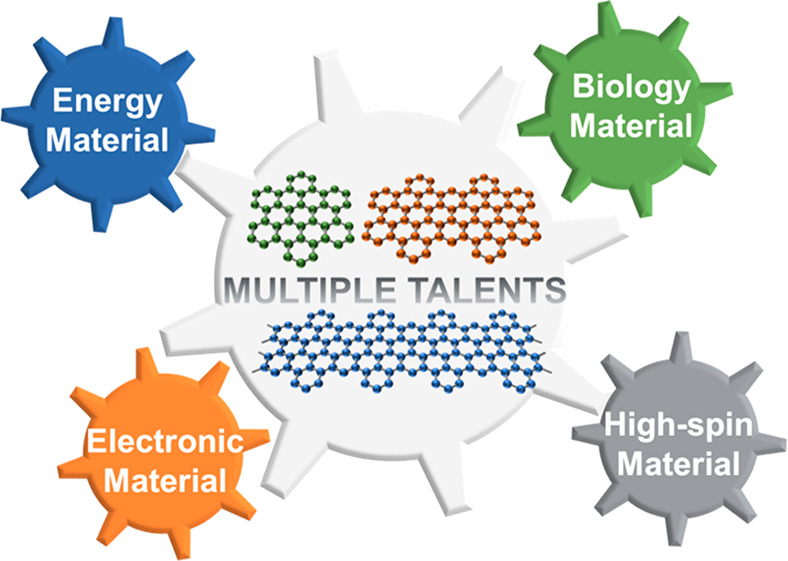- Record: found
- Abstract: found
- Article: found
Nanographenes and Graphene Nanoribbons as Multitalents of Present and Future Materials Science

Read this article at
Abstract

As cut-outs from a graphene sheet, nanographenes (NGs) and graphene nanoribbons (GNRs) are ideal cases with which to connect the world of molecules with that of bulk carbon materials. While various top-down approaches have been developed to produce such nanostructures in high yields, in the present perspective, precision structural control is emphasized for the length, width, and edge structures of NGs and GNRs achieved by modern solution and on-surface syntheses. Their structural possibilities have been further extended from “flatland” to the three-dimensional world, where chirality and handedness are the jewels in the crown. In addition to properties exhibited at the molecular level, self-assembly and thin-film structures cannot be neglected, which emphasizes the importance of processing techniques. With the rich toolkit of chemistry in hand, NGs and GNRs can be endowed with versatile properties and functions ranging from stimulated emission to spintronics and from bioimaging to energy storage, thus demonstrating their multitalents in present and future materials science.
Related collections
Most cited references340
- Record: found
- Abstract: found
- Article: not found
Electric Field Effect in Atomically Thin Carbon Films
- Record: found
- Abstract: found
- Article: not found
A review of electrode materials for electrochemical supercapacitors.
Author and article information
Comments
Comment on this article
 Smart Citations
Smart CitationsSee how this article has been cited at scite.ai
scite shows how a scientific paper has been cited by providing the context of the citation, a classification describing whether it supports, mentions, or contrasts the cited claim, and a label indicating in which section the citation was made.